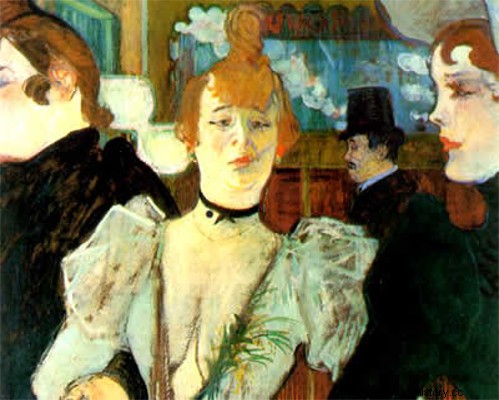
By Rainer Sousa
In the 19th century, we see the expansion of the Industrial Revolution happening in other parts of the world and especially in the Old Continent. In a short time, we see the formation of large urban centers where workers occupied different jobs and experienced a type of routine never seen before in all of history. From then on, entertainment activities ended up taking a good part of the income of workers and big businessmen at the time.
More than just sex servants, we see that prostitutes of that time spent resources and time to produce a look capable of attracting the most interesting customers. In many situations, a prostitute became the lover of a great tycoon and, for such a situation, she was presented with luxury objects and attracted the eyes of other women who knew about their lovers. Likewise, the cabarets were distinguished by the structure and options offered to their patrons.
The most prestigious prostitutes were reputed to organize great shows by exploiting the artistic gifts of many of their prostitutes. Over time, this type of proximity between prostitution and art ended up stigmatizing the artistic career of several women who had nothing to do with this type of activity. Even today, many people question the morals of the artists of their time and turn their attention to those who transgress social rules.
In less glamorous circles, we see that many women opted for prostitution at a time when the condition of factory workers was deplorable. Without the protection of specific legislation, women earned less for the service they performed in factories and were often harassed during their work. When fired from their position, they had in prostitution an option for those who were no longer traditionally recluse in the private domestic environment.
It is interesting to note that the prostitute's look was usually associated with wearing flashy pieces of clothing or wearing too much makeup. Exaggeration became a code that could be offered to men seeking that kind of attraction. On the other hand, not being yet an accessory to enhance the body's own body, underwear was reduced to the maximum for the satisfaction of interested customers.
Already at that time, some regulatory mechanisms tried to limit the place of action of prostitutes at that time. In London, for example, the Metropolitan Police Act forced several prostitutes to live in other parts of the city. In some brothels, the internal discipline applied to women was so strict that, in some cases, riots were even reported. In the second half of the 19th century, Paris already registered an average of one prostitute for every two hundred men aged between 15 and 50.
By realizing these characteristics of prostitution in the 19th century, we see the development of contradictions that mark this period. On the one hand, bourgeois morality imposed a rigid control over the spaces and roles of women in society. On the other hand, the wealth and inequality promoted by that same society established the growth of this attractive and despised activity.
